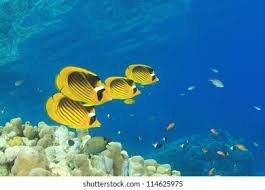
In the enchanting world of flora, cosmos flowers stand out as magnets for a diverse array of insects, captivating them with their vibrant colors, sweet nectar, and intricate floral structures. From bees and butterflies to beetles and hoverflies, cosmos blooms play a vital role in supporting pollinators and enhancing biodiversity within ecosystems. In this article, we’ll delve into the fascinating relationship between cosmos flowers and insects, exploring the ways in which these enchanting blooms attract and benefit a myriad of insect species.
**1. Nectar-Rich Blooms:**
Cosmos flowers are renowned for their abundant nectar production, which serves as a valuable food source for a wide range of insect pollinators. Bees, butterflies, moths, and other nectar-feeding insects are drawn to the sweet rewards offered by cosmos blooms, which provide them with the energy they need for flight and foraging activities. The high nectar content of cosmos flowers makes them particularly attractive to pollinators seeking nourishment in their quest for survival.
**2. Pollination Partnerships:**
As flowering plants, cosmos flowers rely on insect pollinators to transfer pollen between flowers, facilitating the process of fertilization and seed production. Bees, in particular, play a crucial role in pollinating cosmos flowers, as they visit the blooms in search of nectar and inadvertently transfer pollen from one flower to another as they forage. Butterflies, moths, and other flying insects also contribute to the pollination of cosmos flowers, forming important partnerships that ensure the reproduction and survival of plant species.
**3. Floral Morphology:**
The unique floral morphology of cosmos flowers contributes to their attractiveness to insect pollinators. Cosmos blooms feature a tubular-shaped corolla with a landing platform, making them easily accessible to bees and butterflies seeking nectar. The arrangement of petals and reproductive structures within the flower encourages efficient pollen transfer and enhances the likelihood of successful pollination by visiting insects. This specialized floral design maximizes the effectiveness of insect pollinators and strengthens the bond between cosmos flowers and their pollination partners.
**4. Color and Contrast:**
The vibrant colors of cosmos flowers, including shades of pink, white, purple, and orange, play a crucial role in attracting insect pollinators. Bees and butterflies are particularly sensitive to color and are drawn to flowers with bright, contrasting hues that stand out against the surrounding foliage. Cosmos blooms, with their bold colors and contrasting markings, act as beacons for pollinators, guiding them to the source of nectar and pollen. The visual appeal of cosmos flowers enhances their attractiveness to insects and reinforces their role as important pollination hubs within ecosystems.
**5. Seasonal Availability:**
Cosmos flowers bloom seasonally, typically from late spring to fall, coinciding with the peak activity of many insect pollinators. As other floral resources become scarce, cosmos blooms provide a valuable source of nectar and pollen for bees, butterflies, and other insects during the warmer months of the year. Their seasonal availability ensures a steady supply of food for pollinators, helping to sustain their populations and support ecosystem health.
**6. Ecological Benefits:**
The relationship between cosmos flowers and insect pollinators has far-reaching ecological benefits that extend beyond individual plant species. By attracting and supporting diverse pollinator populations, cosmos flowers contribute to the pollination of other flowering plants within ecosystems, promoting biodiversity and ecosystem resilience. The pollination services provided by insects ensure the reproduction of wildflowers, fruit trees, and agricultural crops, making cosmos flowers invaluable allies in the quest for sustainable food production and environmental conservation.
**7. Conservation Significance:**
The allure of cosmos flowers to insect pollinators underscores their conservation significance in efforts to protect and preserve biodiversity. As habitat loss, climate change, and pesticide use threaten pollinator populations worldwide, the role of cosmos flowers as floral resources for bees and butterflies becomes increasingly important. By cultivating cosmos flowers in gardens, parks, and natural habitats, individuals and communities can create valuable foraging opportunities for pollinators and contribute to their conservation.
**8. Educational Opportunities:**
The relationship between cosmos flowers and insect pollinators offers rich educational opportunities for exploring the interconnectedness of plants and animals in natural ecosystems. Educational programs and outreach initiatives focused on pollination biology and floral ecology can raise awareness about the importance of pollinators and the role of flowers such as cosmos in supporting their survival. By engaging students and the public in hands-on learning experiences, educators can foster a deeper appreciation for the wonders of nature and inspire future generations to become stewards of the environment.
In conclusion, cosmos flowers are captivating ambassadors of biodiversity, attracting a dazzling array of insect pollinators with their vibrant colors, sweet nectar, and specialized floral structures. Their role as pollination hubs within ecosystems highlights the interconnectedness of plants and insects and underscores the importance of conserving floral resources for pollinator conservation. As we marvel at the beauty and complexity of the cosmos flower-insect pollinator relationship, let us strive to protect and preserve these precious connections for the benefit of all living beings on Earth.





